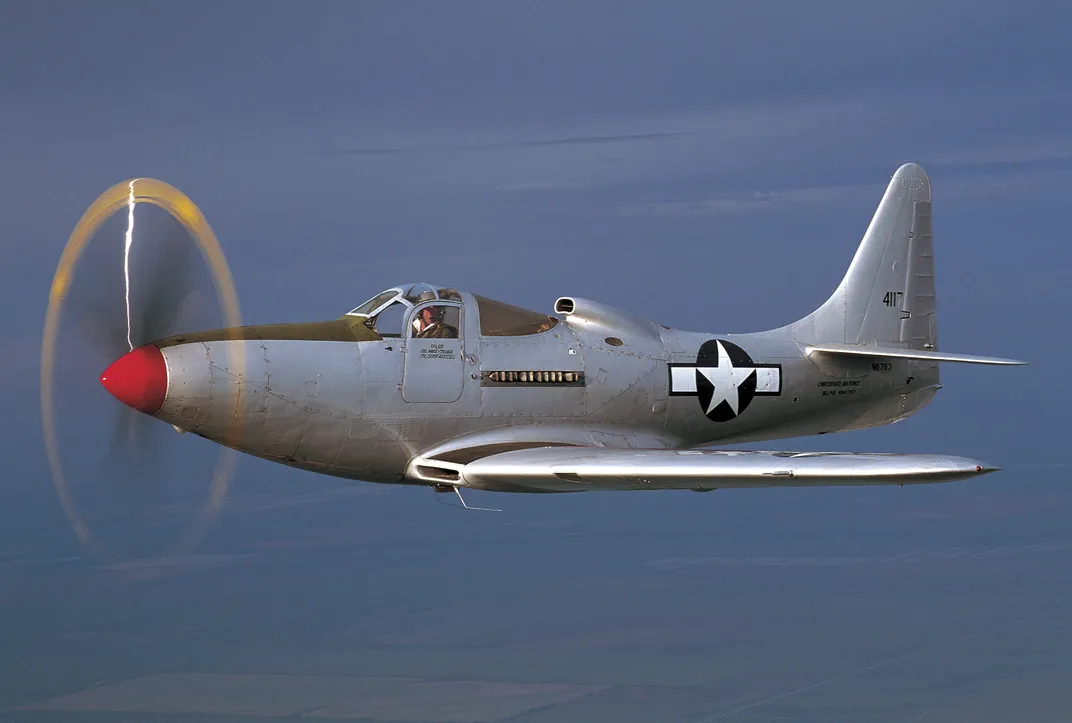P-39s of the Cactus Air Force
/https://tf-cmsv2-smithsonianmag-media.s3.amazonaws.com/filer/21/e8/21e856df-e445-4ba7-b510-fc1f4e161cb9/p-39.jpg)
When U.S. Marines stormed the shores of Guadalcanal in August 1942 in the first major U.S. Pacific offensive of the war, both Americans and Japanese threw whatever nearby air forces they could find into the mix. The result was an ad hoc unit called the Cactus Air Force, after the island’s code name. Its most lackluster member was the Bell P-39 Airacobra.
Lost in the adoration of the superb fighter aircraft that both sides produced in World War II are airplanes like the P-39, which couldn’t attain the performance of those later, more advanced designs but proved critical early in the war. The Airacobra was designed around its powerful 37mm cannon, which fired through the propeller nosecone; to make room for the gun, the engine was mounted behind the cockpit. The unarmed, unarmored, hand-crafted prototype demonstrated excellent performance, but the production model was a disappointment: After armor was added and the turbocharger, considered too finicky for combat and field maintenance, was removed, the aircraft couldn’t fly very far or fast. It was nearly useless above 12,000 feet, where bomber raids took place, and was no match against nimble Japanese fighters.

The P-400, an export variant of the P-39, was pressed into service as the U.S. Army geared up for the Pacific offensive. A handful arrived on Guadalcanal to bolster U.S. Marine Corps aircraft, but a Japanese naval barrage and bombing raids promptly destroyed most of them. Once it became clear that the preferred interceptors were the resident F4F Wildcats, the remaining P-39s were used mainly for ground attack. But there was still plenty of opportunity—Japanese supply ships made for tempting targets, and the ground troops the ships supplied were easy to find. In one instance, three P-39s strafed an open field filled with hundreds of Japanese troops; the attack was credited with blunting an offensive against what became known as “Bloody Ridge,” and earned the mission leader the Navy Cross.
The P-39 was dropped by many of its customers, including the first, the United Kingdom, after it became clear that it simply couldn’t perform well enough at altitude to intercept German bombers and lacked the range for cross-channel assaults.
But the airplanes Britain cast off were welcomed on the other side of Europe. In the Soviet Union the air war was fought mainly at low altitudes and short ranges, and when German aircraft flew low for close air support, the Little Cobras, as the Soviets called their P-39s, were there to strike.
“If we had flown it [as] the Americans outlined in the aircraft’s specifications, they would have shot us down immediately,” pilot Nickolay Golodnikov told a Russian interviewer in 2003. “This fighter was a dud in its [design] regimes.”
The Soviets got nearly half of the 9,558 P-39s built, through the Lend-Lease program, and ordered still more of an improved version, the P-63. At least eight Soviet pilots scored 20 or more kills in the fighter, including highest-scoring ace R.A. Rechkalov, with 48 of his 54 confirmed kills in the P-39.
Back to A History of WW2 in 25 Airplanes
Next: The Douglas Dauntless and Other Heroes of Midway
Last: B-25s Fly a Raid on Tokyo